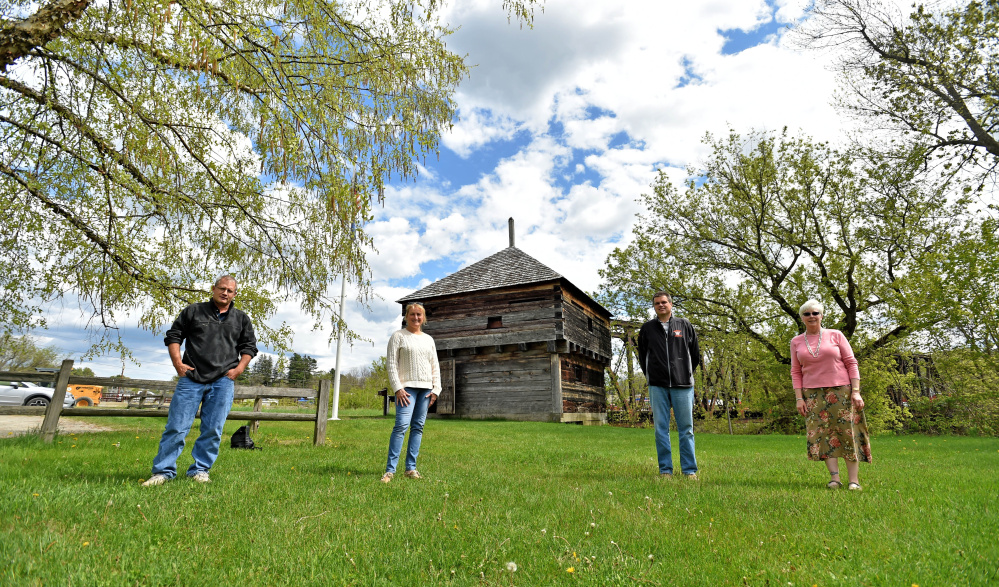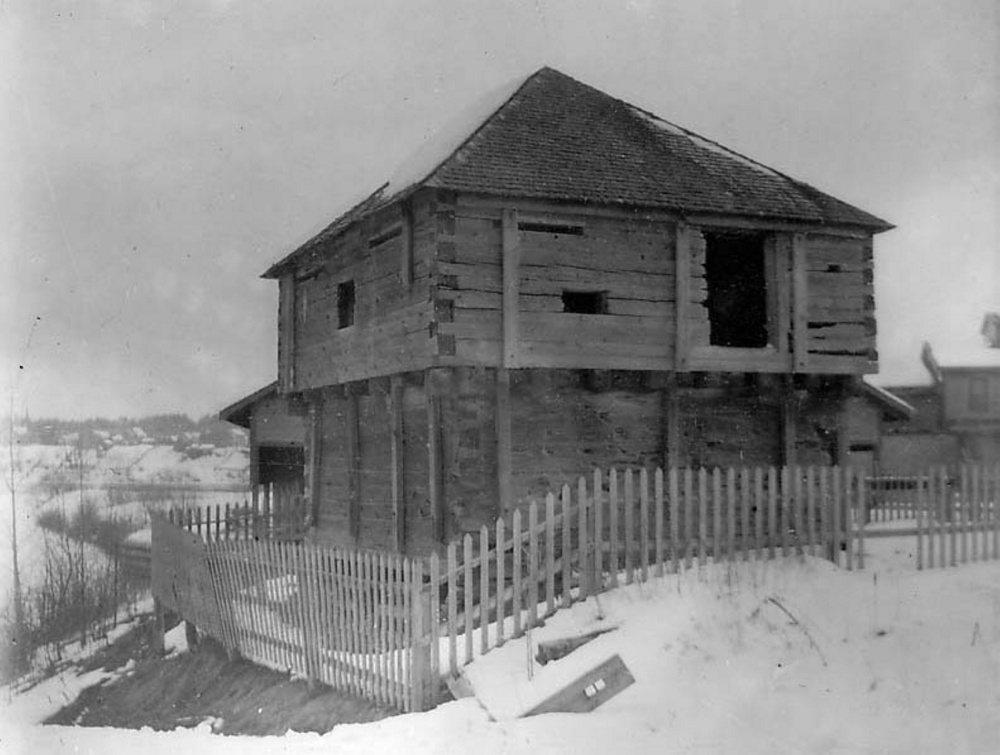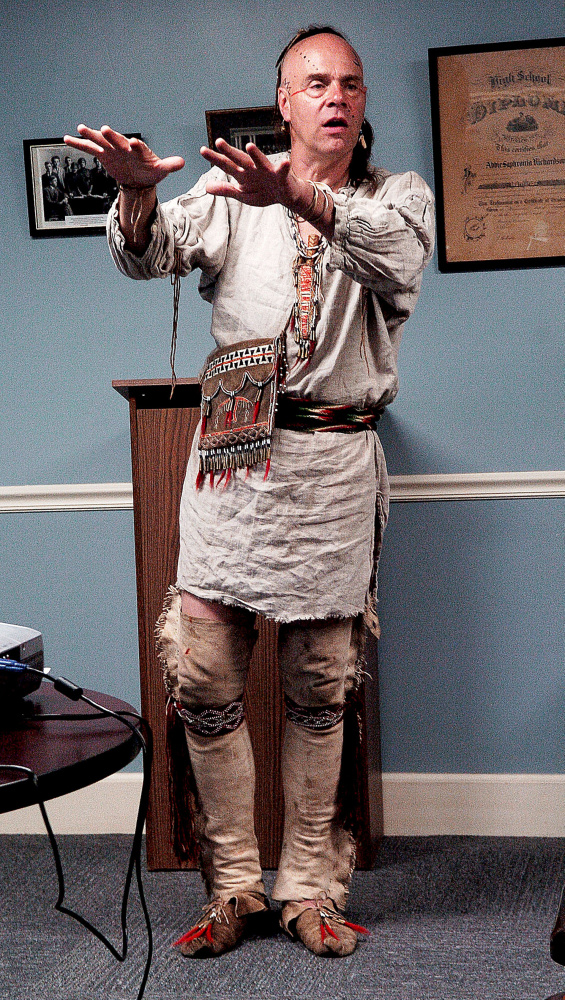WINSLOW — The town will hold its second annual Fort Halifax Days Saturday, a celebration aimed at raising awareness about the history of the area, and particularly Fort Halifax Park.
Organizers also hope to raise money for the park, and they say improvements will help it become a destination for both residents and visitors, Town Manager Mike Heavener said Thursday.
“Certainly for this region, that fort provided security settlers needed to start populating Maine,” he said in a telephone interview. “That location in general was a gathering place.”
Ken Hamilton, a historian and colonial reproduction artist, will camp at the park this weekend, re-enacting life as an Abenaki Indian. Other historical re-enactors also will be at the park Saturday for people to observe as well as interact with, so they can learn more about the Colonial period when the fort was built, Heavener said.
The original 18th-century blockhouse at the fort, which was established in 1754 where the Kennebec and Sebasticook rivers meet, was washed away in the April 1987 flood. The current blockhouse was built from remaining pieces of the original. The large, grassy park also is home to the town’s annual Fourth of July celebration, which draws thousands from around the state.
Last year the town launched a $193,000 project that will include adding walking trails, a new parking lot, informational plaques and an outline of the original fort.
In 2014, Winslow got a $96,000 grant from the Maine Bureau of Parks and Lands for the project, and the town is working to raise money to match that amount.
As a lead-up to Saturday, Hamilton gave a presentation Tuesday evening at the Winslow Public Library about the Taconic Peninsula, site of the fort and its importance to the Wabanaki, the four tribes that are native to Maine.
“I would call them sacred places,” Hamilton said about places where bodies of water converge.
One of the most important things for native life was portages, which were like shortcuts. People could carry canoes and cargo by hand over portages, or paths that connected two bodies of water and made for a quicker route than paddling around it in a canoe.
Hamilton was dressed as a member of the Abenaki tribe, in unbleached linen with some small designs painted on his face. His head was shaved except for a ponytail in the back of his head, which is the traditional style for married Abenaki men. He had a bag beaded with a thunderbird, a seemingly otherworldly creature that would fight the forces of earth and water.
“We’re just surface dwellers in between,” he said. So Indians would emblazon the creature on items to have some of that power with them, as well as symbols for water and earth so those powers wouldn’t be offended.
Hamilton described tools used during the 1600s to a crowd of about a dozen residents, including the town manager. One item he brought with him was a piped tomahawk, which is an ax that has a smoking pipe sticking out of the handle. This was popular on the East Coast during the Seven Years’ War, he said.
“If you went on ‘Antique(s) Roadshow,’ they’d tell you this is worth about $10,000,” he said.
One woman in the audience brought a piece of mortar, which she said she found about 150 feet from the blockhouse at Fort Halifax. It was probably from the era, Hamilton said.
One of his friends had found a cannonball, also from the era, while clearing around the fort for the dam removal, Hamilton said.
Hamilton also spoke about how long Indians might have been living in this area, and how incredible that is.
While his family came from Europe to start a farm in the United States in the 1600s, his wife’s relatives, who are members of the Penobscot tribe, probably have been around this area of Maine for much longer.
“I said to Nicole, your great-great-great-great-great-great-great-grandfather probably stood on that rock with a fishing spear for eons,” Hamilton said.
Hamilton also talked about trade between Indians and Europeans. Indians would get valuable metal supplies, such as guns, in exchange for the “three F’s”: furs, fins and forests. The French especially wanted beaver furs, because the animal had been depleted in Europe. Now similar things are happening in the United States.
“This is a beautiful region and it was in very primitive condition, and these guys made the most of it,” Hamilton said. “But once a way of life ends and you wreck an ecosystem, there’s no going back. … We’re just realizing that now with pollution and dams.”
The celebration on Saturday will begin at 1 p.m. with an opening ceremony by the Howard Company, a living history re-enactment group based at Old Fort Western in Augusta.
Castlebay, a band that mixes Celtic and Colonial music, will perform from 1 p.m. until 3 p.m.
Various living history actors will be at the park all day for performances and to interact with visitors. The Howard Company will be doing marching demonstrations, as well as cooking outdoors as people would have in Colonial times. Indian actors also will be performing French and Indian War re-enactments.
There also will be food and craft vendors at the park.
Madeline St. Amour – 861-9239
mstamour@centralmaine.com
Twitter: @madelinestamour
Send questions/comments to the editors.







Comments are no longer available on this story